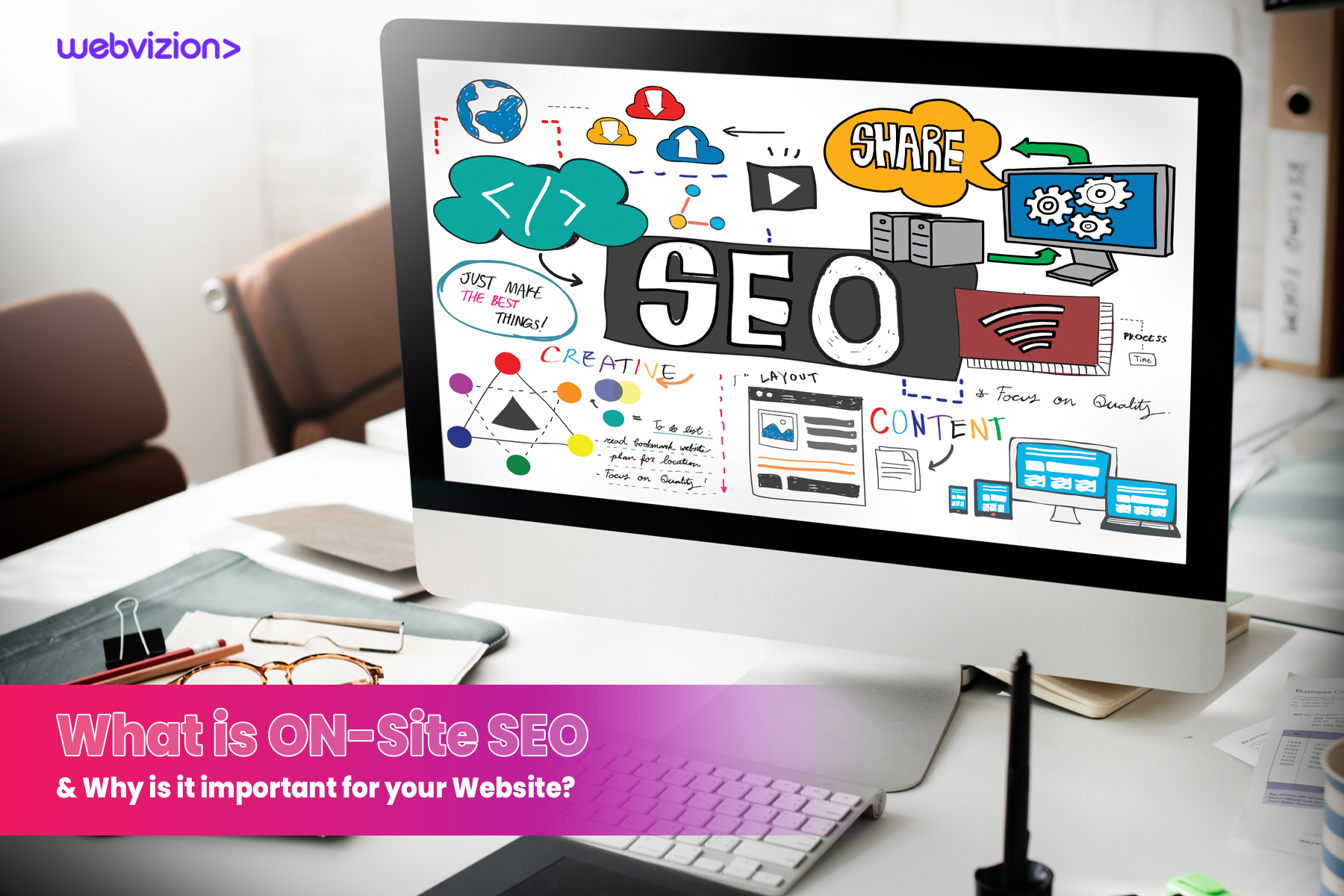
The search engine optimization process helps you get a better rank in search engine results. On-site SEO and Off-site SEO are the two main components of the search engine optimization process. In this article, we’ll talk about the Importance of On-site SEO.
What is On-site SEO?
On-site SEO is the practice of optimizing website individual pages to get a better rank and more organic traffic in search engines. It’s a process of making a website search engine-friendly.
Without proper On-site SEO, Off-site SEO is fruitless.
The most important On-site factors include:
1. Page Title and Descriptions
2. The Heading Tags H1, H2,..H6
3. Images ALT text
4. Page Internal Links
5. Website Loading Speed
6. Well Formatted Page URLs
7. Mobile Optimization
Let’s Boost your website traffic!
Page Title and Descriptions
The website page title and descriptions are the most important factors of on-page SEO. The search engine will first ‘read’ page titles and descriptions when crawling the page. Users will see them as well on search engine results along with your website page URL.
If your page title and descriptions are not well optimized, then you are making the search engine crawler’s work more difficult to understand the content of your page.
The rules to keep in mind while setting up page titles and descriptions:
– Keep your title under 60 characters.
– Include the target keyword in your page title.
– Keep your descriptions under 150 characters.
– Include your target keyword in page descriptions as well. (Not necessary, but still a good practice.)
– Avoid keyword stuffing. (Don’t include unrelated and un-useful keywords in the title and descriptions.)
The Heading Tags
The heading tags are the second most important component in Onsite SEO. Every web page should have multiple heading tags from H1 to H6. But the most important heading is H1. You should never ignore the H1 heading from a page. There should only be one H1 heading on a page.
You can check your page heading by selecting VIEW SOURCE information. and then open the ‘FIND’ box by clicking CTRL+F and searching for ‘<h1>’.
This will show you how many headings are you using on a page. if you have more than one H1 heading ask your web developer to fix it as soon as possible.
Now when it comes to other headings like H2, H3, H4, H5, and H6, then you can use multiple headings in a well-structured format.
Images ALT text
How can the search engines identify image content?
The answer is using its “ALT” text.
With the help of ‘ALT’ text, the search engines can understand what the image is about. Every image of your website should contain related ‘ALT’ text. Google and other search engines use the power of image ‘ALT’ text to show appropriate images to users based on their search queries.
Some quick tips to optimize the images:
– Use suitable image ‘ALT’ text.
– Use the Image title.
– Rename your image name before uploading it to the website. (use a suitable image name)
– Use online image compressor tools before uploading them to the website. (so that your page loads faster)
Page Internal Links
Internal links are very much beneficial for your website SEO. Internal links help search engines like Google to discover more pages of the same domain. It helps in decreasing the bounce rate of your website and enhancing the user experience.
Internal links also show a user about some related links to a topic. This means readers can also take the benefit of internal links by checking out some other articles on the same website.
Website Loading Speed
In the era of the digital world, site speed is essential. Nowadays users don’t want to wait for a site to load. they want the information and they want it quickly. If they search for something on a website and the website isn’t loading right away, they will quickly abandon the site, and start looking for another site.
Google also doesn’t prefer slow-loading websites. In 2010, Google announced that website page loading speed is an important ranking factor in search engine results.
You can also read the 5th point of this article – SEO Trends. Boost Your Business.
Well Formatted Page URLs
When it comes to Page URL strings, they should be short and readable. According to a report short URLs tend to rank higher in search engine results. Some quick tips for making SEO-friendly URLs:
– Add target keywords in URLs
– Always use human-readable URLs
– Ignore underscore (_) and use hyphens (-) in URLs
– Avoid capital letters in URLs
– Use canonical URLs
– Put the target keyword just after the domain name (www.example.com/target-keyword)
Mobile Optimization
If you want your website to be found on Google search results, then your website needs to be mobile responsive.
A responsive website provides a better user experience no matter what device they’re using. Users love a responsive website. A mobile responsive website will enhance the user experience.
You can also use ‘Mobile-Friendly Test‘ online tools to check if your website is mobile-friendly or not.
Approximately 50% of web users are spending their quality time browsing on mobile devices over desktops. and if your website is not mobile-friendly then you might lose some mobile customers cause of a bad user experience.
Keep in mind, that customer satisfaction is the key in every business, and your website is the face of your business. So if it’s not mobile responsive, then ask your developer to fix it ASAP.
Final Thoughts
Website On-site SEO is more important than website Off-page SEO. If your On-site is not good at all then doing Off-site is just wasting of time. If you want us to check your website’s On-site SEO then you can contact us here.




